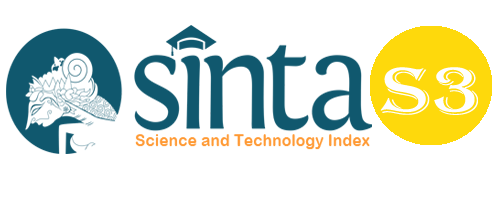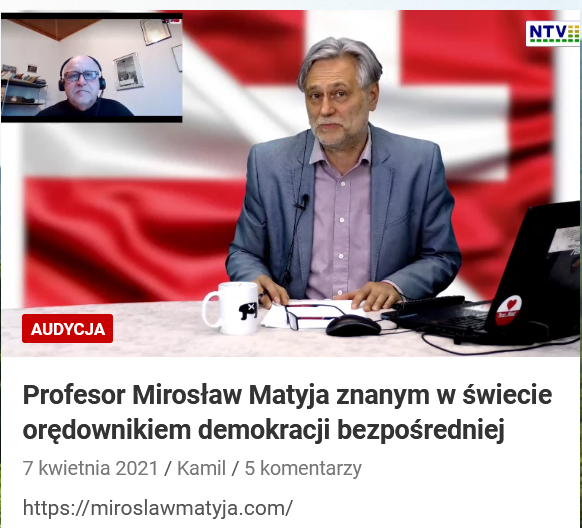Impact of Government Expenditure in Education, Health Sectors and Financial Inclusion on Human Development in Indonesia
Abstract
The aim of this paper in to assess the impact of financial inclusion and government expenditure in education and health sectors in order to increase human development index. Government expenditure has important role to achieve and increase economic growth and welfare. Government fiscal policy spending in education and health sectors are kind of significant government policy to increase human development. This study found that financial inclusion has important contribution to human development. Financial inclusion has positive effect to the human development index components along with government expenditures in education and health sector. As the consequences, in the future the government should prioritize its budget in education and health sector in order to increase human resources quality in Indonesia.
Keywords
Full Text:
PDFReferences
Agustina E, Rochaida E, Ulfah Y. (2016). Pengaruh Pengeluaran Pemintah Daerah Sektor Pendidikan dan Kesehatan Terhadap Produk Domestik Regional Bruto Serta Indeks Pembangunan Manusia di Kalimantan Timur. Inovasi : Jurnal Ekonomi Keuangan dan Manajemen, Vol.12.(2), pp. 192-217.
Anwar Anas Iswanto, Paulus Uppun, Indraswati Tri Abdi Reviani. (2016). The Role of Financial Inclusion to Poverty Reduction in Indonesia. IOSR Journal of Business and Management. Volume 18, Issue 6, Ver III (Jun.2016) pp 37-39.
Bank Indonesia. Keuangan Inklusif. 2014.Booklet Keuangan Inklusif. www.Bank Indonesia.go.id. [15 Oktober 2018]
BPS-Statistics Indonesia. (2011). Indeks Pembangunan Manusia 2009 – 2010.
BPS-Statistics Indonesia. (2015). Indeks Pembangunan Manusia, Metode baru.
BPS-Statistics Indonesia. (2017). Indeks Pembangunan Manusia 2016
BPS-Statistics Indonesia. (2019). Indeks Pembangunan Manusia (IPM) Tahun 2018 September 2018. Berita Resmi Statistik No.32/04 Th. XXII, 15 April 2019
Budiriyanto, Eko. (2011).Indeks Pembangunan Manusia dalam Formulasi Dana Alokasi Umum (DAU).Direktorat Jenderal Perimbangan Keuangan. Kementerian Keuangan
Fahmy Obaid, M.Rustam, Evi Asmayadi.(2006). Pengaruh Keuangan Inklusif terhadap Kredit yang Disalurkan pada Sektor Usaha Mikro, Kecil dan Menengah di Indonesia. Jurnal Ekonomi, Bisnis dan Kewirausahaan., Vol.5,No.2, 118-135.
Gujarati, D and D Porter. (2009). Basic Econometrics Theory and Policy. New York, Mc Graw Hill, 5’th Edition.
Gupta A, Chotia V, Rao NV.(2014) Financial Inclusion and Human Development : A State-Wise Analysis from India. International Journal of Economics, Commerce and Management. Vol.II, Issue 5, pp 1-23.
Herrero Alicia-Garcia, David Martinez Turegano. (2015). Financial Inclusion, Rather Than Size, Is The Key to tackling income equality. Working Paper No.15/05, BBVA Research.
Kahang M, Muhammad S, Rahmat BS. (2016). Pengaruh Pengeluaran Pemerintah Sektor Pendidikan dan Kesehatan Terhadap Indeks Pembangunan Manusia. Jurnal Ekonomi, Manajemen dan Akuntansi, Volume 18, (2), 2016:130-140.
Koutsoyianis, A. (1977).Theory of Econometrics. 2nd edition, The Macmillan Press, London.
Kuri P K, A Laha. (2011). Financial Inclusion and Human Development in India : An Inter-State Analysis. Indian Journal of Human Development, Vol.5, No.1, 2011, pp 70-80.
Kusharjanto, H., dan Kim, D.,(2011), Infrastructure and Development: the case of Java, Indonesia, journal of Asia Pasific Economy, Vol 16, No. 1, February 2011, ppl. 111-124.
Laha, A. (2015).Association between Financial Inclusion and Human Development in South Asia : A Cross-Country with Special Reference to India. Journal of Economic Policy and Research, April-Sept, 2015, Vol.10, No.2 pp 69-91.
Okoye Laurence, Olayinka Erin, Kehinde Adetiloye, Nwanneka Modebe. (2017). Financial Inclusion as A Strategy for Enhanced Economic Growth and Development. Journal of Internet and Banking Commerce, May, Vol.22, No.S8.PP 2-14.
Otoritas Jasa Keuangan. (2016). Peraturan Otoritas Jasa Keuangan No.76/POJK.07/2016 tentang Peningkatan Literasi dan Inklusi Keuangan di Sektor Jasa Keuangan bagi Konsumen dan/atau masyarakat.
Pyndick R.S, D.L Rubinfeld. (1998). Econometric Models and Economic Forecast. 4th edition, Richard D.Irwin and MacGraw-Hill, Boston.
Saraswati, Erwin. (2012). Public Spending Educatioan and Inequality : A Case Study in Indonesia. International Journal of Social Sciences and Humanity, Vol. 2, No. 5, September 2012.
Sarma, Mandira, Jesim Pais.(2011) Financial Inclusion and Development : A Cross Country Analysis.. Journal of Economic Development. 23:613-628.
Sarma, Mandira. (2010). Index of Financial Inclusion. 2010. Discussion Papers in Economics. 10-05.Center for Internaional Trade and Development. School of International Studies. Jawaharlah Nehru University.
Sarma, Mandira. (2012). Index of Financial Inclusion : A Measure of Financial Inclusiveness. Working Paper NO 07/2012. Berlin Working Papers on Money, Finance, Trade and Development.
Shah, M. et al. (2020). The Development Impact of PT. Medco E & P Malaka on Economic Aspects in East Aceh Regency. Budapest International Research and Critics Institute-Journal (BIRCI-Journal). P. 276-286.
Situmorang, Sawitania.(2016). Dampak Kebijakan Ekonomi dan Bonus Demografi Terhadap Pembangunan Sektor Pertanian di Indonesia [disertasi]. Bogor (ID):Institut Pertanian Bogor.
Suhariyanto, Kecuk. (2015). Indeks Pembangunan Manusia. Bahan Sosialisasi. Badan Pusat Statistik.
Sumas, Sugiarto. (2012). Dampak Kebijakan Fiskal Sektor Pendidikan dan Sektor Kesehatan Terhadap Indeks Pembangunan Manusia di Indonesia [Disertasi]. Bogor (ID): Institut Pertanian Bogor.
Ummah, Bintan Badriatul. (2015). Analisis Inklusi Keuangan dan Pemerataan Pendapatan di Indonesia [Thesis]. Bogor (ID): Institut Pertanian Bogor.
United Nations Development Programme. (1990). Global Human Development Report.
Usmaliadanti. (2011). Analisis Pengaruh Tingkat Kemiskinan, Pengeluaran Pemerintah di Sektor Pendidikan dan Kesehatan terhadap Indeks Pembangunan Manusia di Propinsi Jawa Tengah [Skripsi]. Semarang (ID) : Universitas Diponegoro.
DOI: https://doi.org/10.33258/birci.v5i2.5009
Article Metrics
Abstract view : 54 timesPDF - 33 times
Refbacks
- There are currently no refbacks.

This work is licensed under a Creative Commons Attribution-ShareAlike 4.0 International License.

This work is licensed under a Creative Commons Attribution-ShareAlike 4.0 International License.

_.gif)

















_.gif)



